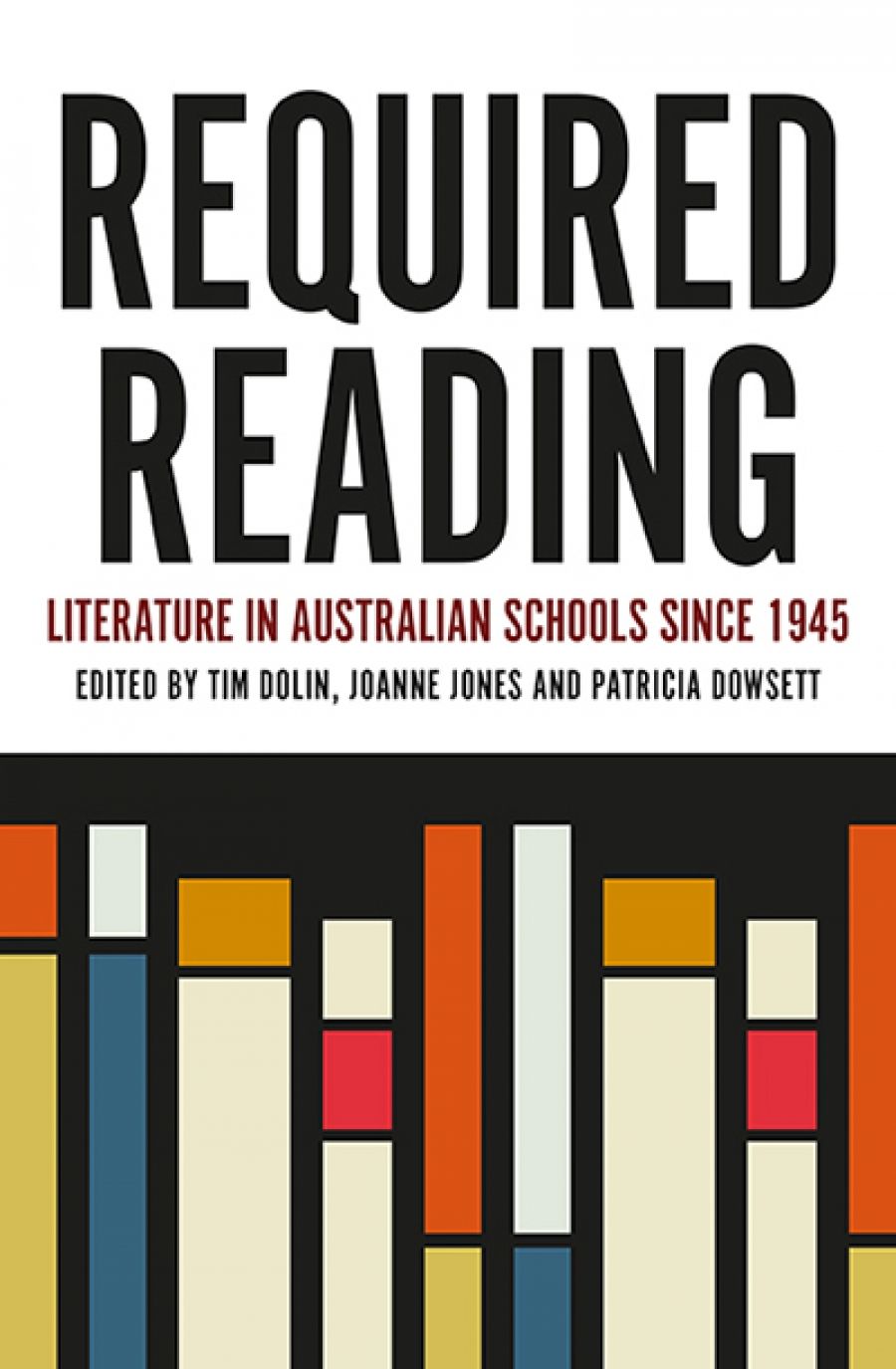
- Free Article: No
- Contents Category: Education
- Custom Article Title: Ilana Snyder reviews 'Required Reading: Literature in Australian schools since 1945' edited by Tim Dolin, Joanne Jones, and Patricia Dowsett
- Custom Highlight Text:
At the heart of Required Reading is a database called ALIAS (Analysis of Literature in Australian Schools). It includes all the reading material prescribed for senior secondary English and Literature courses in most of the states from 1945 to 2005. Like all electronic databases, ALIAS comprises a structured collection of items ...
- Book 1 Title: Required Reading
- Book 1 Subtitle: Literature in Australian schools since 1945
- Book 1 Biblio: Monash University Publishing, $39.95 pb, 368 pp, 9781925495577
Integral to the seventeen chapters are various understandings of the major shifts in thinking about teaching and reading literature that shaped what was prescribed. There are some common threads. Until the 1960s, English had been a literature-based course which involved the close study of literary works and the nurturing of students’ responses to them. In the first half of the twentieth century, heavily influenced by the ideas of Matthew Arnold, English centred on cultural heritage and the humanist concern with morality as expressed through literature. Arnold’s critical and theoretical writings were then developed and given new forms by F.R. Leavis and the New Critics.
In the 1970s, the civilising mission of English began to give way to personal encounters with the world of texts. By this time, English had already split into at least two separate courses, English and English Literature. With the rise of media and cultural studies, greater attention was given to other kinds of reading skills when engaging with literature and cultural texts: skills in critical thinking, formal or rhetorical analysis, and social, cultural, and literary history.
As a result of these changes, over the last four decades a range of approaches to reading literature have been used in senior secondary classrooms that include cultural heritage, personal growth, skills models, cultural studies, and critical literacy. The categories overlap and the terms continue to be used in various, often contested, ways. Teachers have been eclectic in their efforts to balance the requirement that students read and write well with the different demands of engaging with literature and other cultural texts. At the same time, they have displayed loyalties to particular versions of English and Literature. These loyalties are also evident amongst the authors in Required Reading.
The study’s limitation, acknowledged by the editors, is that the texts prescribed on lists almost never correspond to exactly what gets taught. Unlike in universities, the ethical imperative has always been foremost in literary studies in senior English and Literature. Texts are studied to make sense of the here and now and to find things out about ourselves. However, the evidence does provide new insights into why certain texts are valued and endorsed over others, texts that have endured and influenced whole generations of readers.
The contributors’ analyses of ALIAS reveal that there was a rich and unexpected diversity in what was prescribed in different states and that the lists never amounted to any recognisable literary canon at any given moment. It seems they absorbed into the literary a range of high literary, middlebrow, and popular texts, British and non-British, local and national, and book and non-book, in distinctive ways. It comes as no surprise that the constants on the literature syllabuses from 1945–2005 were Shakespeare, Hardy, Chaucer, and Conrad, with the former consistently central and dominant.
Literary works regarded as most worthy of study since 1945 include: To Kill a Mockingbird, Snow Falling on Cedars, Pride and Prejudice, and The Great Gatsby. Australian counterparts are Cloudstreet, My Brother Jack, My Place, and The Fortunes of Richard Mahony. These books are valued by the school literary system as they have what the editors call a kind of ‘affective universality’. But they are also valued because they mobilise thinking about nation making, locality and region, civic multiculturalism, and political dissent.
There are several stand-out chapters. Of those devoted to historical studies of text selection and curriculum change, Larissa McLean Davies and Brenton Doecke’s analysis of the ultimate failure of the radical VCE experiment in Victoria is particularly poignant. Of the chapters that analyse the data based on specific texts, authors, theories, or periods, Georgina Arnott’s focus on the works and attitudes of Judith Wright highlights the importance of context in the process of canonising poems. Arnott also reminds readers of Wright’s notoriously negative views of the use of her works in classrooms and the formal teaching of poetry ‘one of the worst things you can do to it’.
Perhaps the most provocative chapter is the last in which Dolin argues that the emphasis on context in the study of literature has led to a neglect of the aesthetic. Overall, this timely book prompts educators to think about where we’ve been, where we’re going, and where we may wish to go in teaching and reading literature in schools.


Comments powered by CComment